
introductory comment


In my book on Bergson, I included a brief speculation about what a Bergsonian cognitive science might look like. This may sound surprising, both to those who are interested in Bergson, and to those who are interested in cognitive science. My purpose here is to try to explain why such a speculation may have some interest. In section I, I offer a partial view of cognitive science; in Section II, I say something about Bergson and his work, and in Section III I describe his view of what he called “pure perception”; finally, in Section IV, I indicate how this account may lead us to challenge an assumption commonly made by philosophers in general, and cognitive scientists in particular.
I take it that a main purpose of cognitive science is to improve our understanding of how the mind works. This involves investigation of the operation of the brain. It involves the exploration and exploitation of “computational” and other models. It involves looking at the nature and structure of language and its relation to other phenomena. It involves consideration of abnormal as well as normal mental function. It also tends to be associated with a materialist ontology for many practitioners, though this may not be an essential part of the enterprise. Finally, and very importantly, it is multidisciplinary. Psychologists, neurophysiologists, linguists, anthropologists, computer scientists, philosophers and others work together, and should be working together, and learning from each other in order to advance our understanding of the mind. None of these elements is new in itself.
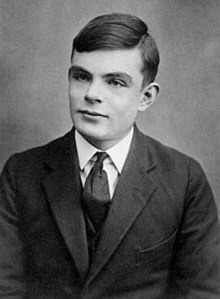
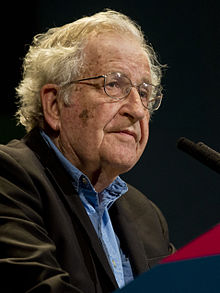
However, there is something new in the particular way in which these and other elements have come together again in our time under the title of ‘cognitive science’, partly because of Turing’s seminal work which played a crucial part in the development of computers and gave rise to the study of artificial intelligence, partly because of developments in linguistic theory due to Chomsky, and partly because a good while ago psychologists began to question their adherence to strict behaviourism, and to change their mind about looking inside the “black box”.
The rapid development of cognitive science in recent years is, I think rightly, considered by many to be exciting and important. I enter one caveat, concerning the role of what is called ‘computation’. First, it is worth noting that the word ‘computer’ in English is infelicitous (unlike say the French term ‘ordinateur’), in so far as it apparently implies that computers are calculating machines. This is incorrect, since these machines fundamentally carry out only logical operations. It is for this reason that a computer can perform calculations, handle graphics, construct spreadsheets, etc. etc., in so far as these and other operations can be analysed logically. For this reason, one should be cautious about the extensive use of what are called ‘computational models’ in cognitive science. However, this may be a mere matter of terminology.
Henri Bergson’s father was a Polish musician, and his mother was a Yorkshire woman of Irish descent, also Jewish. His father worked in several European countries, including France, where Henri was born in 1859. He became a naturalized French citizen. He studied at a Lycée in Paris, and boarded in the Springer Institution, visiting his parents in London during the holidays.
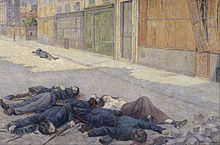
As an 11-year old boy he lived through the dramatic events of the Commune. He was a brilliant student, but subsequently proved to be intellectually too non-conformist to be accepted by the University establishment of his time.

However, he was appointed to a Chair in the Collège de France, where his public lectures always attracted a wide and enthusiastic audience. Indeed, he acquired a great international reputation. His earlier work centred on the nature of mental states, and he gave an extensive and unusual treatment of some traditional problems in the philosophy of mind, including the mind/body problem, as well as touching on many more detailed topics. This period lasted from 1889 to 1902, and was characterized by a certain guiding principle. He believed that many traditional philosophical problems were spurious, and should not be approached in the traditional fashion. Instead, in the case of the mind/body problem, he believed that progress could be made only by going back to what Wittgenstein was later to call “the rough ground”. We should study, for instance (and he did) the findings of clinicians and psychologists about phenomena like amnesia and aphasia. In this way, I quote, ‘a capital problem of metaphysics is shifted over into observation on the ground, where it can be progressively resolved, instead of endlessly feeding disagreements between schools in the closed field of sheer disputation’. This comment should strike a sympathetic cord in the minds of least some cognitive scientists.
It is of course a recurring theme in the history of philosophy to find a thinker attacking traditional metaphysics. But Bergson was led to shift his position on this matter, as we see in a decisive transitional work, the Introduction to Metaphysics of 1903, written after he was appointed to the Chair in the Collège de France, in which he introduced his account of “intuition”, to which Russell was to object so strongly. For up to this point, Bergson had given powerful and original treatment of questions about the mind, by drawing extensively on relevant empirical sciences. But now he gives a crucial role to our awareness of what we are doing. In the case of raising an arm, he contrasts my awareness of raising my arm, and another person’s awareness of the same movement. The first of these he calls ‘intuition’.
And in the transitional piece, he raises the possibility of asking what we should find if, by thought experiment, we consider what inside knowledge of other natural phenomena would be like, that is, phenomena which are not mental phenomena. So, for instance, we look around, and we may see something orange. But what would it be like to ‘shine orange’? (What is it like to be a bat? ...) I shall not here try to sketch his answer to this question. The point is that his account of intuition, and his generalization of it, led to a sort of reinstatement of metaphysics, and led Bergson to allow himself a much wider field of enquiry, writing about evolution, relativity theory, morality and religion. Like Aristotle, Bergson in his early work banished metaphysics, but then changed his mind. Even so, he retained a cautious and self-questioning view about the role of philosophy. In his lecture ‘Philosophical Intuition’ (1911), he said:
Take someone who has followed a certain scientific method over a long period, and laboriously achieved his results, and who tells us: ‘experience, helped by reasoning, leads to this point; scientific knowledge starts here and ends there; these are my conclusions’; and the philosopher is supposed to have the right to reply: ‘Fine, leave that with me! Just look what I can do with it! I shall complete the knowledge which you brought to me incomplete. What you brought in a disjointed form, I shall unify. ...’ Really, what a strange pretension! How can the profession of philosophy entitle a practitioner to go further than science? ... Such a conception of the rôle of the philosopher would be injurious for science. But how much more injurious for philosophy!’
In this article, I concentrate on the earlier period, and look in particular at Bergson’s view of what he called “pure perception”.
In order to give an account of Bergson’s view of perception, we may start with a traditional, and perhaps common-sense view, which goes back at least to Aristotle. According to this view, perception is a three-place relation. Obviously, it involves a perceiver, and an object perceived. But these two elements are not all, because the perceiver is not immediately aware of the object itself, but rather of a mental or sensory representation of the object.
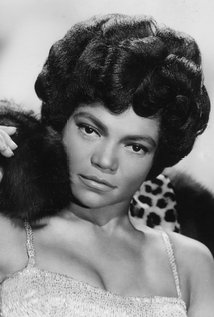
Bergson entirely rejects this apparently commonsensical picture, and offers an account of pure perception in which representation plays no part. Now, why speak, you may ask, of ‘pure’ perception? Consider some perceptual episode, like Eartha Kitt feeling or caressing a piece of ice (something I once saw her do during a night-club performance). It involves (at least) three different aspects. First, the event may be considered simply qua perception, and this will be some relation between Eartha and the ice. Second, it may be considered qua sensation or affection, and this is to do with the feeling in Eartha’s hand. Third, it may be considered qua recognition, as Eartha recognizes by touch what kind of stuff she is feeling (though she will of course already kow what it is. Bergson considers it to be crucial to distinguish these three aspects of perceptual episodes and consider each distinctly. Here we shall concentrate mainly on what he says about them considered simply qua perception, i.e. as examples of ‘pure perception’. An ordinary object, like a brick, is fully in contact with its environment, in the sense that all its properties can affect and be affected by that environment. We have a situation of causal transparency.
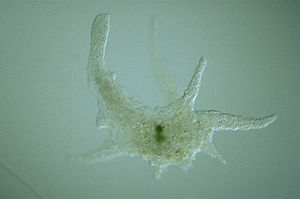
But living organisms are also selectively sensitive to their environment. As a result, the interaction between organism and environment is no longer transparent. For instance, in the case of the simplest organisms, only a very limited set of properties of the environment can evoke a response. Thus a body capable of action acts as a kind of ‘filter’ of the properties of these objects. It does not react to all properties; it need not represent any property; but it does tend to respond to the properties important to it. An amoeba, for instance, responds selectively to certain features of its environment, though, whatever detailed mechanisms are at work, we should not take them to include or constitute any sort of representation of that environment. This is why representation is a bad picture of perception. Perceiving, in a living body, is not having a picture of an object, but selecting just some of its properties in the light of that body’s needs and projects, of what Bergson calls its ‘virtual actions’. The amoeba, then, provides a model of pure perception in higher organisms, though, as Bergson insists, pure perception is the lowest form of mind.
Simple organisms respond in a way close to the causal, even though only to a limited set of properties, since the flow from selectively perceived properties of the environment to a response is quite smooth and direct. But in the case of higher organisms there is a considerable variety of possible responses, because of the variety of available virtual actions. A perception of an object, then, rather than being a representation of it, is just the actual properties of the object as filtered by the virtual actions of the perceiver.
But what are these ‘virtual actions’? It is clear that, for Bergson, they are not simply actions which it is logically possible for an agent to perform. Rather they are actions which the body has some inner tendency or at least some specific capacity to perform. And this means that they can be of two kinds. They may spring from instinct, that is, they may be some built-in or ‘hard-wired’ behaviour patterns, or they may spring from intelligence (and the creative learning which it makes possible). This means that the ‘filtering’ of real properties which constitutes pure perception is not only a biological, but also a psychological and social phenomenon.
On a traditional view, still popular, it would be enough to study the intrinsic properties of the organs of perception and their modes of interaction with the environment. This would show us what it is and is not capable of responding to, and how. And in this case pure perception would be a biological phenomenon. But there is a serious limitation to this view, however attractive it may at first seem, and whatever important truth it contains. For what we in fact perceive is not determined solely by the physiological factors which determine what we are capable of discriminating. It is necessary in addition to take account of what we want or need to perceive, and of how we learn to perceive in one way rather than another.
The metaphor of ‘filtering’, evidently, suggests simply that only some of an object’s properties are the residue of a process of selection. Thus, suppose that an object has the property of being radioactive. This property passes through the filter of an unaided human perceiver, in the sense that we are not equipped to perceive and react to radiation of this sort. It goes without saying that the radiation may have an effect, possibly a deadly effect, on us; but it also goes without saying that we have no power directly derived from pure perception to observe or react to it.
Thus, Bergson’s ‘virtual actions’ are actions which we are capable of performing, or have a tendency to perform, given not only our physiology, but also our learning and training in a specific environment. Filtering, therefore, is achieved not only by the physiological constraints of our organs of perception and by inbuilt or instinctive action schemata, but also by the kinds of things we are able to do because we have learnt to do them, and need or want to do them. And the second of these, so far from merely reflecting our perceptual capacities, will regiment them, by moulding them to our needs.
In summary, Bergson’s position about pure perception is ultra-externalist. On his view, a perception is not a mental state at all, nor is it any sort of representation, it just is those (wholly external) properties of an object which are selected by a body capable of action for possible response. The only ‘internal’ aspect of an event of perception, qua perception, is the virtual actions of the perceiver, whatever the detailed mechanisms of action or reaction may be.
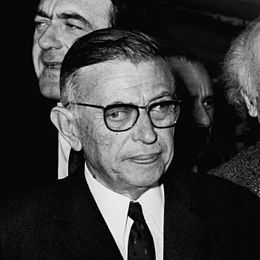



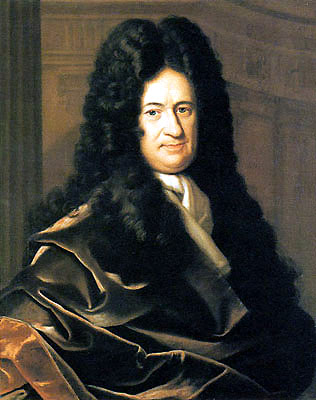
It is commonly assumed that there is an important and radical distinction between thought and action, between intellect and will, between conation and cognition. Some make the further assumption that cognition is independent of action. In consequence, models of the human mind have often treated it as an ‘information-processing device’ before all else. Of course, this view has not gone unchallenged. The nisus of Leibniz, the treatment of the will in Maine de Biran, Fichte and Schopenhauer, Sartre’s notion of a project, are some, rather randomly selected, examples of such philosophical challenges of this kind. The work of Bergson can be seen in the context of this debate.
For if Bergson’s account of pure perception is correct, it presents a challenge to work in cognitive science in which the primary task is often considered to be to provide models of how representations are generated, and of the role which they play. Bergson would certainly have followed all this work with detailed interest, and taken it seriously. He had no general objection to the notion of mental representations; indeed, he considered that they do play an important part in our mental life. However, in the context of modelling perception in its simplest form, he actually held it to be wrong to give representation a constitutive part to play.
We may ask, therefore, what form a Bergsonian research programme in cognitive science would take. This is not a silly question, given Bergson’s own detailed interest in and engagement with the neuro-psychology of his own day. He makes a very specific claim. From the simplest level of basic perception right through to complex operations of our intelligence, segmentation of experience is determined by our inherited and acquired ‘virtual actions’, including what he calls ‘motor diagrams’. Indeed, he discussed in some detail how the neurophysiology of his own day was acquiring knowledge of such motor diagrams.
This, I believe, constitutes a challenge to some assumptions of normal cognitive science. The label of this discipline already asserts that the primary task is to deal with cognition. And, as we have noted, the further assumption is commonly made that a key notion in cognition is that of representation. This is why a main task then becomes how to model the creation of representations, and the operations which can be performed on them. But for Bergson, as we have seen, ordinary perception or cognition is dependent upon virtual actions. Thus the primary fact about organisms is not that they process information, but that they are active. What generates our cognitive arrangements is these virtual actions, including our ‘motor diagrams’. So our enquiry should begin not by asking how representations could be or are fabricated, but with how action-schemata arise, and what they are.
We may be tempted to put this in a slogan: action comes before cognition. But it would be more faithful to Bergson’s account to treat action as itself constituting the lowest or simplest form of cognition, in that it is a function of virtual actions to segment our experience. Let us go back to Eartha Kitt feeling the piece of ice. A Bergsonian account might go something like this. Eartha is equipped with the virtual action of caressing people and perhaps, given her imagination at work, things — with her hand. Set aside the question whether it is instinctive or learned or both. Her perception of the ice just is her caressing contact with it.
Caress-wise, it turns out that the ice has some appropriate properties marked out by this virtual action, like its moist smoothness. To that extent, the virtual action, once it becomes real, can succeed, and go on. But the world is not in the habit of making things bend automatically and completely to our actions. Other things come in. The ice, for instance, is cold. And this coldness is not a property selected by the virtual action of caressing, and indeed may conflict with it. Thus, though we may properly begin by considering her action as pure perception, Eartha’s sensations, memories, recollections and thoughts are inevitably associated with it. If she continues the caress, it will be because of evoked representations or memories, or of further intentions, and she takes control of the initiated action of caressing for the sake of some other tendency, say to create a certain effect upon an onlooker or audience.
Thus a Bergsonian cognitive science would start with a modelling of simple action-schemata, which would be the groundwork of an account of perception at its simplest and most basic level. As for sensations, they too should investigated (according to Bergson’s view) as themselves being particular kinds of localized action-schemata. And the building up and modification of action-schemata would also provide an account of one main kind of memory, which we may call habit-memory.
All this ought to be able to be done without employing any notion of representation. But, from this point on, we should indeed need to approach the crucial matter of mental representations, and attempt an account of what Bergson called ‘pure recollection’, before we can begin to get back to an integrated account of the whole episode.
These remarks, I think, suggest what may be a certain re-orientation of conceptual and empirical work in cognitive science. Animals like ourselves should be seen not as information-processing devices which then happen to act as a result of these processes according to goals that happen to be built in, but as action-oriented creatures whose cognitive abilities arise out of its proclivities to action.
It is of course true that cognitive science as currently practised does encompass work on action. A great deal of work has been done not only on robotics, but on motor control in arm and eye movements, for instance. I am suggesting that we should consider reassessing the nature and rôle of such work in the whole enterprise. You may feel, though, that I have not produced very much in the way of detailed, cogent philosophical argument in this programmatic piece. My purpose is to provoke further discussion of these matters, and learn from it.
